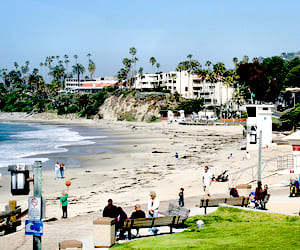Bundall Tack Coat Application – A Complete Behind-the-Scenes Breakdown of How We Prepare Aluminium Windows for Final Coats
- Aluminium Painting, Aluminium window painting service, Commercial Painters Gold Coast, Elite Aluminium Repainting, Gold Coast Painter, Interior Painters Gold Coast, Painters Gold Coast, Painters in Gold Coast QLD, Painters near me
- 2 pac painting, Alluminium window painting services, aluminium colour change, aluminium security screen painting, aluminium spray painting
There are a lot of moments in aluminium window painting that make a difference to the final finish, but very few are as important, or as misunderstood, as the tack coat. Homeowners rarely see it, many painters skip it entirely, and yet this step is one of the biggest contributors to the factory-smooth finish RepaintPro is known for all across the Gold Coast.
This 4,000-word article takes you through a full Bundall job where the tack coat is the feature of the video. It explains why it matters, how it works, why you can’t get a proper final finish without it, and why RepaintPro goes through this process on every aluminium window, door, slider, colonial frame, fencing panel, gate or shopfront we repaint.
Bundall homes vary in age, style, and architecture, but they have one thing in common: highly visible aluminium windows. The suburb’s mix of canal-front homes, render finishes, large openings and strong sun exposure means window frames are one of the first things people notice. Whether the frames are cream, yellowed, powder-coated brown, faded bronze or mismatched across renovations, the tack coat is the step that bridges preparation and perfection.
This is the complete story.
—
1. Why We Highlight the Tack Coat in Our Videos
Most painting videos online show final coats being sprayed. It looks dramatic, glossy and satisfying. But that’s only part of the story. The finish you see in our Bundall tack coat video doesn’t happen by chance. It’s engineered.
The tack coat is the transition layer—the point where the primer and the final lacquer meet. It’s thin, controlled and purposely not heavy. It is not meant to cover. It is meant to “open” the surface, providing the perfect platform for the wet coats that follow.
We film it because:
It shows how careful and measured the process is.
It demonstrates technique that separates amateurs from professionals.
It helps customers understand what goes into a proper job.
It proves the finish is not a one-coat spray-and-go approach.
It captures the change from dull primer to the first signs of colour.
If people knew how many steps go into this stage, they’d understand why genuine aluminium repainting can’t be rushed.
—
2. Setting Up the Bundall Job – The Real Conditions We Face
Bundall has its own unique conditions: waterways, cross-winds, street-side access challenges, reflective surfaces and sun exposure that changes quickly. On this particular project, the windows had already been fully prepped, cleaned, sanded, primed and masked. The site was ready.
Before even pulling the trigger on the spray gun, we checked:
Wind direction
Bundall can funnel breezes from the canals, which affects overspray and drying.
Temperature and humidity
Ideal tack coat flash time is affected heavily by heat and moisture in the air.
Dust control
Many Bundall streets have ongoing renovations; airborne dust must be managed.
Gun pressure and needle settings
We controlled the atomisation to avoid heavy edges, especially on colonial bars and reveals.
Masking integrity
Even a loose edge of tape can compromise the razor-sharp finish RepaintPro is known for.
This is why people hire specialists. Aluminium doesn’t allow margin for error.
—
3. What the Tack Coat Actually Does
The tack coat is a light, semi-transparent mist layer designed to:
Create surface tension for the next coat
Bond chemically with the primer
Lock down micro dust
Prevent runs and sags in full wet coats
Equalise absorption across the frame
Give the lacquer something to “bite” into
Reduce the risk of orange peel texture
Set the tone for perfectly built gloss layers
Without a tack coat, wet coats can:
Slide
Patch
Overload corners
Leave uneven gloss areas
Dry with a texture instead of levelling out
This is why spraying aluminium is not comparable to brushing or rolling. The surface needs to be treated like automotive work—controlled build-up, perfect atomisation, and the right transitions between coats.
—
4. Tack Coat Technique – How It Was Done on This Bundall Job
This section breaks down the method exactly as shown in the video.
4.1. Pressure and Spray Pattern
For this job, we used controlled pressure (similar to 28 PSI depending on the gun model). This allows:
Fine atomisation
No heavy edges
No spitting at trigger-on
Smooth overlap
We chose a fan pattern suited to narrow aluminium edges and mullions.
4.2. Gun Distance
We sprayed from a consistent distance, not too close to flood the frame and not too far to dry-spray. Aluminium edges can be tricky, so the distance was adjusted slightly around bars, reveals and underside edges.
4.3. Movement and Overlap
The tack coat is sprayed faster than a wet coat. Overlap remained consistent, but the volume was lighter. Think of it as the understructure of the final finish.
4.4. Reading the Surface
After each pass, we watched how the lacquer sat:
It should not build
It should not gloss fully
It should look slightly dull
It must be even and uniform
When the entire frame has a lightly “grabby” look, it’s ready for the next step.
This is where experience matters. You cannot teach this timing in a manual.
—
5. Bundall Homes and Why Tack Coats Matter More There
Bundall’s architecture includes:
Wide canal-facing windows
Colonial-style bars
Large living room sliders
Bay windows
Multi-panel assemblies
High-exposure sun angles
These elements make the tack coat critical.
Bundall conditions often cause:
Faster flashing
Reflective glare that shows imperfections
Weathered frames that absorb inconsistently
Large openings where uneven flow-out becomes visible
The tack coat resolves all of these before the wet coats highlight them.
—
6. What Came Before the Tack Coat (The Essential Work)
Although this article focuses on the tack coat, a quick recap of the earlier stages explains why the surface takes the tack coat so well:
● Cleaning
Wax and grease remover, degreasing, brushing crevices.
● Sanding
Every millimetre, including underside folds, corners and internal bars.
● Masking
Glass, tiles, brickwork, render, soffits, cladding, flooring, gardens.
● Priming
Fully cured, even, consistent, no patchiness, correct micron thickness of 2-Pac primer or single-pack systems depending on the job.
All of that groundwork is why the tack coat behaves perfectly when laid down.
—
7. The Moment the Colour Takes Shape
In the Bundall video, you can see a visual change once the tack coat is on. Even though it isn’t meant to cover, it gives the first hint of the final colour.
This is where the job starts to feel real for the homeowner.
The old aluminium colour (brown, cream, faded bronze, anodised gold, mismatched trims) begins disappearing beneath the fresh lacquer.
The transformation is subtle, but emotionally significant for clients watching the process.
—
8. Flash-Off Time – The Silent Part That Matters Most
After the tack coat is applied, we allow flash-off time. This depends on:
Temperature
Humidity
Air movement
Thickness of pass
On the Bundall job, conditions were ideal for a controlled flash:
Not too hot
Low afternoon wind
Stable humidity
When the tack coat reaches the correct tackiness—not wet, not dry—the next coat is applied.
Too soon and it runs.
Too late and you lose adhesion and flow-out.
This timing is one of the reasons DIY attempts fail.
—
9. Building the Final Finish
Once the tack coat was ready, we began the wet coat build:
Slow, controlled passes
Proper overlap
Balanced gloss
Watching for pooling in tracks
Spraying underside edges carefully
Maintaining consistent gun angle
You can see in the video that the lacquer begins to level and shine evenly almost immediately. This is the payoff from a proper tack coat.
—
10. Two Key Benefits of a Tack Coat That Homeowners Don’t Know
10.1. It Prevents Edge Build-Up
Aluminium frames have:
bevelled edges
thin vertical faces
curved corners
tiny internal lips
These edges attract excess paint in heavy coats.
The tack coat reduces the risk of:
runs
sags
curtains
heavy pooling
texture differences
10.2. It Creates a Strong Bond
Aluminium is non-porous.
Even with primer, the tack coat acts like the “grip coat” between layers.
This prevents:
delamination
chipping
flaking
gloss separation
Especially important in Bundall where salt air accelerates wear.
—
11. Why We Share These Videos From Bundall and All Suburbs
We don’t share videos to sell a service.
We share them to educate.
Customers should see:
the attention to preparation
how the primer looks
what a tack coat actually is
how clean the spray pattern is
how tightly we mask
how careful the movements are
how controlled the film build is
We share this because most people have never seen aluminium windows painted properly.
Bundall has hundreds of homes with ageing frames. When people understand the process, they feel confident contacting us.
—
12. Colour Choices for Bundall Homes
Although this job focused on the tack coat, Bundall customers commonly choose:
Black gloss
Pearl White
Monument
Surfmist
Ironstone
As you’ve said previously:
99% of the work is black or white, and Bundall follows the same trend.
—
13. How the Tack Coat Fits Into the Full Repaint System
Here is the complete journey:
1. Clean
2. Sand
3. Mask
4. Prime
5. Tack coat
6. Wet coats
7. Flash time
8. Tape removal
9. Reinstall screens and doors
10. Walkthrough and inspection
Each step builds on the previous one.
The tack coat is step 5 — the turning point where the finish begins to form.
—
14. Why Bundall Homes Benefit So Much From Window Repainting
Bundall homes frequently undergo renovations:
new render
new roofs
painted brickwork
updated landscaping
modern interiors
The window frames are often still the original colour.
Repainting the aluminium is the missing piece that ties the entire update together.
—
15. Suburbs We Also Service with the Same Method
This Bundall technique is identical across the Gold Coast:
Mudgeeraba
Robina
Varsity Lakes
Reedy Creek
Burleigh Waters
Mermaid Waters
Elanora
Palm Beach
Southport
Ashmore
Labrador
Carrara
Worongary
Nerang
Maudsland
Oxenford
Coomera
Clear Island Waters
All receive the same professional process.
—
16. FAQ Based on the Bundall Job
Q: Why not skip the tack coat?
Because your final finish will never level out properly.
Q: Do tack coats help prevent runs?
Yes. They stabilise edges.
Q: Does every job need one?
Yes. Every aluminium window, door, screen and slider.
Q: Is it just a “thin first coat”?
No. It’s specifically applied for grip, surface tension and flow-out.
Q: Why is your tack coat so controlled compared to other painters?
Because aluminium requires a precise system — no shortcuts.
—
17. Final Outcome in Bundall
The Bundall windows finished with:
crisp razor-sharp lines
smooth factory-level gloss
consistent colour
no sanding marks
full adhesion
a uniform finish across all frames
The tack coat made that possible.
When the tape comes off, the windows look brand new — not repainted.
—
18. Final Thoughts
Bundall homes deserve a finish that matches the location: clean, modern, architectural and durable. The tack coat is one of the most important steps in achieving that.
This article, like all of our content, is not designed to sell anything.
It’s designed to show the real work behind the results.
If you’re in Bundall or any Gold Coast suburb and want your windows updated, simply send photos and your suburb.
✔

Stephen Lockyer
Professional painters and Decorators on the Gold Coast. Serving all your interior and exterior painting needs.
Social Share











































































































































































